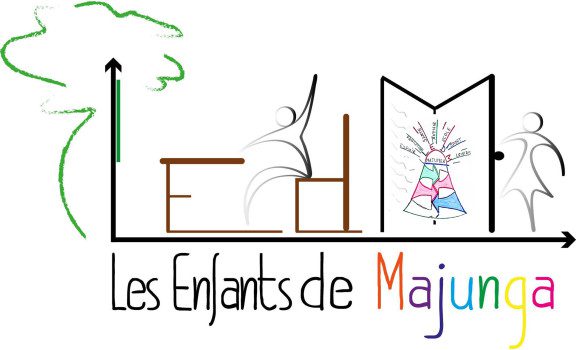Prevalence
Lives and you will twelve-day frequency rates having DSM-IV OCD (s.age. for the parentheses) was 2.3% (0.3) and you will step 1.2% (0.3), respectively. However, totally 28.2% out-of participants advertised experience obsessions otherwise compulsions (O/C) at some time in their life (Dining table step one). All of these respondents knowledgeable one among the 9 O/C sizes considered right here, mostly checking (fifteen.4%), hoarding (14.4%), or purchasing (nine.1%).
Rarer O/C items try of the a higher likelihood of OCD. Conditional odds of OCD are high to have injuring (33.8%) and you may sexual or religious (29.6%) O/C and ‘other’ O/C whoever posts was not given because of the participants (38.9%). Additionally, conditional probability of existence OCD rises monotonically with amount of O/C brands and you can develops dramatically (away from eight.cuatro to help you thirty six.4%) with four O/C models. The most common O/C one of those having lives OCD was checking (79.3%) and you may hoarding (62.3%), while minimum of prominent is O/C concerning the undiagnosed problems for the worry about otherwise anyone else (fourteen.3%).
Course of disease
The mean age of onset of OCD is 19.5 years (s.e.=1.0). Age-of-onset curves differ significantly for males and females (? 2 1=8.1, P=0.004; Figure 1). Males make up the majority of very early onset cases, with nearly one quarter of males having onsets before age 10. In contrast, females have a much more rapid accumulation of new cases after age 10, with the highest slope during adolescence. There are few new onsets among males or females after the early 30s. Those who develop OCD spend a mean of 8.9 years of life (s.e.=1.1) with the disorder.
Age of onset of first obsession or compulsion among respondents with lifetime obsessive-compulsive disorder. The cumulative age-of-onset distributions differ significantly for males and females (? 2 1=8.1, P=0.004). Gray line=females, black line=males.
Comorbidity
Completely ninety% regarding participants that have life DSM-IV/CIDI OCD satisfy standards for the next existence DSM-IV/CIDI problems (Desk 2). The preferred comorbid criteria is anxiety conditions (75.8%), followed by feeling issues (63.3%), impulse-handle conditions (55.9%), and you will substance play with disorders (38.6%). The fresh ORs is actually higher together with other anxiety conditions (1.6–6.9) and with temper disorders (step three.5–eight.4), especially those from the bipolar range (7.4). The fresh ORs also are increased getting reaction-control (2.3–4.9) and you can material play with (3.2–six.0) issues.
OCD normally emerges resistant to the background out of preexisting intellectual conditions. OCD begins on a later on years than simply very (79.6%) comorbid anxiety conditions. A few exceptions is breakup anxiety, and this tends to proceed with the onset of OCD (53.2%), and you can posttraumatic fret problems, which starts in identical season once the OCD (20.7%) and you may and this comes after OCD (39.4%) exactly as tend to given that preceding it (39.9%). The trouble varies having temper issues, where in fact the ratio away from comorbid instances when OCD begins up until the feeling diseases (45.6%) is extremely  just as the proportion where the vibe infection starts ahead of OCD (forty.2%). Most comorbid response-control (92.8%) and you can material explore (58.9%) problems, compared, start on an early years than simply OCD. Earlier mental problems assume the subsequent earliest start of OCD, on high odds of further OCD for the preexisting bipolar illness (ten.8), agoraphobia (10.0) and you can panic attacks (seven.9), and you can alcoholic beverages reliance (8.9).
just as the proportion where the vibe infection starts ahead of OCD (forty.2%). Most comorbid response-control (92.8%) and you can material explore (58.9%) problems, compared, start on an early years than simply OCD. Earlier mental problems assume the subsequent earliest start of OCD, on high odds of further OCD for the preexisting bipolar illness (ten.8), agoraphobia (10.0) and you can panic attacks (seven.9), and you can alcoholic beverages reliance (8.9).
Twelve-times episodes and you will seriousness
Roughly half (50.3%) away from participants having lives OCD statement effort of one’s sickness into the the fresh 12 months preceding the fresh interview (efficiency not revealed, however, available on request). These types of respondents estimate expenses an average of 5.nine h each and every day (s.age.=step one.4) filled by obsessions and cuatro.six h on a daily basis (s.elizabeth.=dos.4) getting into compulsions in the past seasons.
Twelve-month OCD cases in the community fall mainly in the moderate (65.6%) to severe (30.7%) range on the Y-BOCS, with only two 12-month cases (3.7%) classified as mild (that is, Y-BOCS <20). Moderate cases were compared with severe cases on four theoretically significant features of OCD: (1) early onset, defined as onset before age 18 based on survival curves showing this to be the median age of onset among all projected OCD onsets in the sample; (2) poor insight, defined as rarely or never considering O/C to be excessive or unreasonable; (3) large number of O/C types, defined as having four or more of the nine O/C types assessed in the survey; (4) high comorbidity, defined as having four or more comorbid lifetime disorders. Similar proportions of severe (70.5%) and moderate (77.7%) cases reported a large number of O/C types (? 2 1=0.1, P=0.718). Severe cases were distinguished from moderate cases, though, by having fewer early onsets (36.4 vs 80.7%), higher rates of poor insight (29.5 vs 3.3%), and greater incidence of high comorbidity (78.4 vs 28.9%; ? 2 1=3.5–4.4, P=0.036–0.061). Among lifetime OCD cases, poor insight has a strong positive tetrachoric correlation (r * ) with later age of onset (r * =0.71) and a smaller number of O/C types (r * =0.65), but is unrelated to comorbidity (r * =0.10).
